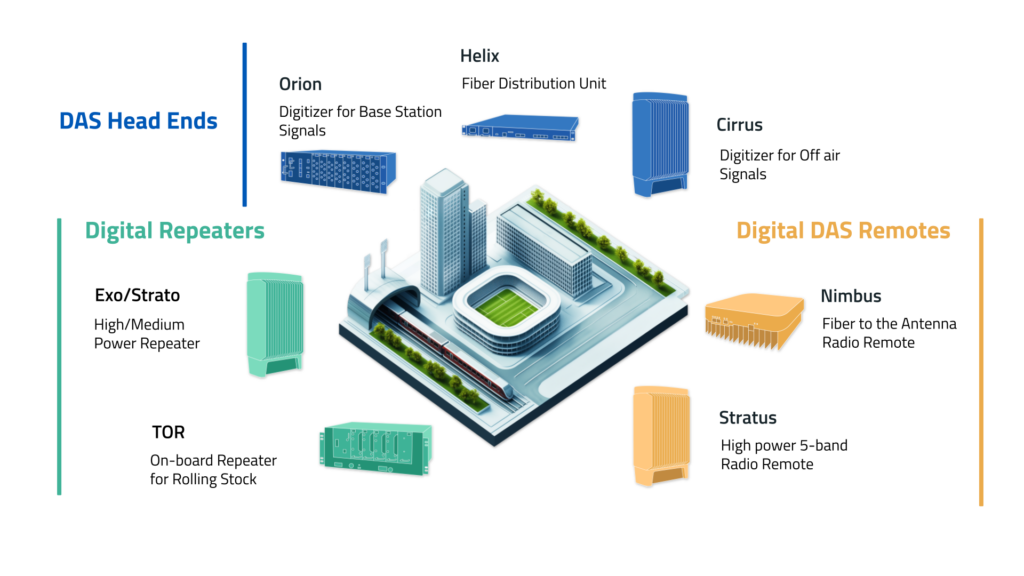Unraveling the Mysteries of Distributed Antenna System (DAS): Revolutionizing Wireless Connectivity
In our increasingly connected world, seamless wireless connectivity is not just a convenience but a necessity. Distributed Antenna System (DAS) technology plays a crucial role in ensuring reliable and robust wireless coverage in various environments. In this comprehensive blog post, we will delve deep into the intricacies of DAS, exploring its definition, components, deployment, and the multitude of benefits it brings to our connected lives.
Understanding Distributed Antenna System (DAS):
Distributed Antenna System (DAS) is a network of antennas designed to distribute and amplify wireless signals. It improves wireless coverage and capacity in specific areas by capturing, amplifying, and distributing signals throughout an area of coverage. A typical DAS consists of components such as the headend, fiber optic cables, remote units, and antennas. These components work together to ensure seamless connectivity.
DAS Deployment and Architecture:
DAS can be deployed in both indoor and outdoor environments. Indoor DAS is commonly found in office buildings, shopping malls, stadiums, and airports. It addresses the challenges of achieving reliable coverage within complex structures by strategically placing antennas throughout the building. Outdoor DAS, on the other hand, caters to outdoor environments such as urban areas, campuses, and public spaces. It requires careful architecture and design considerations to provide seamless coverage over expansive areas.
The Benefits and Advantages of DAS:
DAS brings numerous benefits to wireless connectivity:
- Enhanced Wireless Coverage: DAS eliminates dead zones and signal interference, ensuring uninterrupted connectivity for users. It enhances coverage in areas with weak or no signals, providing a consistent user experience.
- Increased Capacity: DAS expands network capacity to meet the growing demand for wireless data. It supports a large number of concurrent users, enabling smooth data transfer and communication even in high-density areas.
- Improved Network Performance: DAS optimizes network performance by reducing congestion and enhancing signal quality. It provides faster data speeds, lower latency, and improved call quality, resulting in an enhanced user experience.
- Flexibility and Scalability: DAS is flexible in adapting to changing wireless technology standards and future network upgrades. It allows for seamless expansion and integration with emerging technologies, ensuring long-term scalability.
Digital DAS Applications and Use Cases:
DAS finds applications in various industries and environments:
- Public Venues and Large Facilities: DAS is crucial in stadiums, arenas, convention centers, and other public venues. It provides reliable coverage for large crowds, enabling uninterrupted communication and enhancing the overall fan and attendee experience.
- Healthcare Facilities: In hospitals and healthcare facilities, reliable wireless connectivity is essential for critical communication, patient monitoring, and medical devices. DAS ensures seamless connectivity for healthcare professionals, facilitating efficient care delivery and improved patient outcomes.
- Transportation Hubs: Airports, train stations, and other transportation hubs rely on DAS to provide reliable wireless connectivity for travelers. It enables efficient communication, real-time updates, and passenger convenience.
Distributed Antenna System (DAS) technology is revolutionizing wireless connectivity by expanding coverage, increasing capacity, and improving network performance. Whether in indoor or outdoor environments, DAS plays a crucial role in ensuring seamless communication and enhancing user experiences. As we continue to rely on wireless connectivity in our everyday lives, the power of DAS will continue to shape the future of wireless networks.


